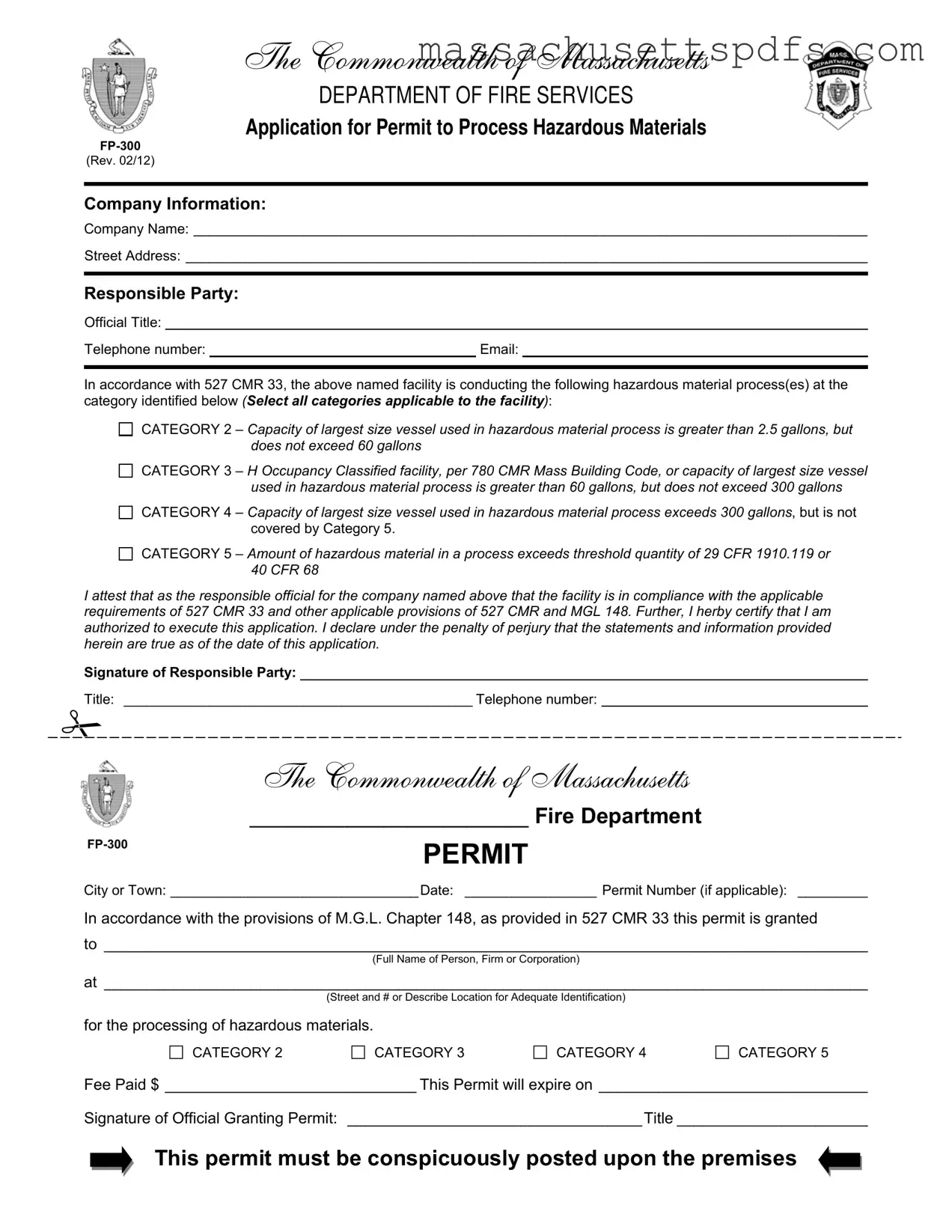Official Fp 300 Massachusetts Template
The FP-300 Massachusetts form is an essential application used to obtain a permit for processing hazardous materials within the state. This form ensures that facilities comply with safety regulations and helps protect both workers and the community from potential hazards. If your facility handles hazardous materials, consider filling out the FP-300 by clicking the button below.
Launch Editor Here
